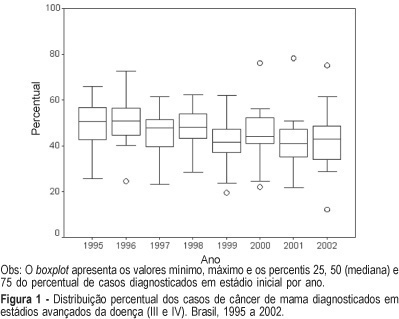Summary
Revista Brasileira de Ginecologia e Obstetrícia. 2021;43(9):655-661
To describe the clinical experience with the B-Lynch technique in the management of postpartum hemorrhage as well as the factors related to the indication of the technique and to present the success rates of the application of the B-Lynch technique.
Observational, retrospective, cross-sectional, and analytical study. Patient data was obtained through the study of medical records. The study population comprised of patients who underwent hemostatic suture using the B-Lynch technique, including 104 patients within the period from January 1, 2005, to December 31, 2019.
Of the total of 104 patients, 82.7% did not present any complications. Blood transfusion and intensive care unit admission were the most prevalent complications, with 13.5% and 15.4%, respectively. Only 1% of the patients had puerperal and surgical site infections. The factors most related to the application of the technique were the presence of previous cesarean section (30.8%), use of oxytocin (16.3%), and pre-eclampsia (11.6%). Puerperal hysterectomy was performed in 4.8% of the patients due to failure of the method.
The clinical experience with the B-Lynch technique was satisfactory since it presented few complications, with excellent results in hemorrhagic control. Previous cesarean section, the use of oxytocin, and preeclampsia stood out as factors related to the indication of the application of the technique, and the success rate in controlling postpartum hemorrhage was 95.2%.
Summary
Revista Brasileira de Ginecologia e Obstetrícia. 2004;26(8):655--6662
DOI 10.1590/S0100-72032004000800010
OBJECTIVE: to characterize the features of pregnant women who had elective preterm delivery, and correlate clinical and obstetrical diagnosis with neonatal results. METHOD: A total of 100 pregnant women admitted in the Obstetric Clinic ward and their respective newborns has been evaluated. The inclusion criteria were: single pregnancy, confirmed gestational age by an early scan, absence of labor symptoms and the presence of a maternal or fetal condition leading to preterm delivery indication. The direct causes of elective preterm delivery were classified in groups, to relate them to the neonatal results, taking into account the gestational age. To assess the neonatal results, the following criteria were analyzed: acidosis; 1st and 5st minute Apgar score lower than 7; intracranial hemorrhage; neonatal death; sepsis and respiratory distress syndrome. Statistical analysis used to correlate the causes of delivery and the gestational age to the neonatal results was done by log-linear models. RESULTS: One patient was excluded from the study due to fetal malformation. The most common direct causes of delivery were prenatal fetal distress (49.5%), hypertensive syndromes (21.2%), intra uterine growth restriction (13.1%) and others (16.2%). Among the main neonatal complications there were asphyxia (33.3%), acidosis (30.4%), respiratory distress syndrome (RDS) (26.3%), sepsis (22.2%), intracranial hemorrhage (21.2%) and neonatal death (13.1%). The cause of delivery was associated with acidosis and RDS by log-linear models and the gestational age was associated with RDS, 1st minute Apgar <7, sepsis, intracranial hemorrhage and neonatal death. CONCLUSIONS: the cause of delivery influences the neonatal results. Nevertheless, the most severe complications are directly dependent on the gestational age of delivery. Therefore, the prenatal diagnosis should be rigorously evaluated by the obstetrician, so that the decision to interrupt the pregnancy could be taken at the suitable moment, thus avoiding neonatal complications.
Summary
Revista Brasileira de Ginecologia e Obstetrícia. 2005;27(11):656-660
DOI 10.1590/S0100-72032005001100004
PURPOSE: to analyze time trends in the clinical staging at the moment of diagnosis in patients with breast and cervix cancer based on data produced by the Brazilian Public Health System (SUS). METHODS: in the first part of this study we identified the published documents describing clinical staging of patients at the moment of diagnosis. Considering their scarcity and poor representativity we conducted the second part of this study through an active search for information. A form was sent via regular mail to all cancer centers in the country (n=173) requesting information about the tumor site and stage at diagnosis by year, in the period of 1995-2002. The statistical analysis was performed using the "R" statistical package. The results are reported as percentage and boxplots. RESULTS: in the first part of the study (1990-1994) we described data from 18 hospitals concerning 7,458 patients with breast cancer and 7,216 patients with cervix cancer. The median of the percentage of cancers diagnosed at an advanced stage (stages III or IV) was 52.6 and 56.8%, respectively. In the second part of the study (1995-2002) data were collected from 89 cancer hospitals and 7 chemotherapy or radiotherapy clinics. There was a total of 43,442 cases of breast cancer and 29,263 of cervix cancer. The response rate based on the potential contact list was 55%. The median percentage of patients in advanced stage was 45.3% for breast cancer and 42.5% for cervix cancer. CONCLUSIONS: few studies have examined the time trends in staging of cancer at diagnosis in Brazilian hospitals. Data obtained from Hospital Cancer Registries showed that in the last decade there was a reduction in the percentage of cervix and breast cancer at the advanced stage. This reduction can be due to an improvement in early detection of these cancers.

Summary
Revista Brasileira de Ginecologia e Obstetrícia. 2018;40(10):656-657
Summary
Revista Brasileira de Ginecologia e Obstetrícia. 2018;40(10):656-657
Summary
Revista Brasileira de Ginecologia e Obstetrícia. 2000;22(10):657-657
DOI 10.1590/S0100-72032000001000011
Summary
Revista Brasileira de Ginecologia e Obstetrícia. 2000;22(10):657-657
DOI 10.1590/S0100-72032000001000010
Summary
Revista Brasileira de Ginecologia e Obstetrícia. 2000;22(10):658-658
DOI 10.1590/S0100-72032000001000012